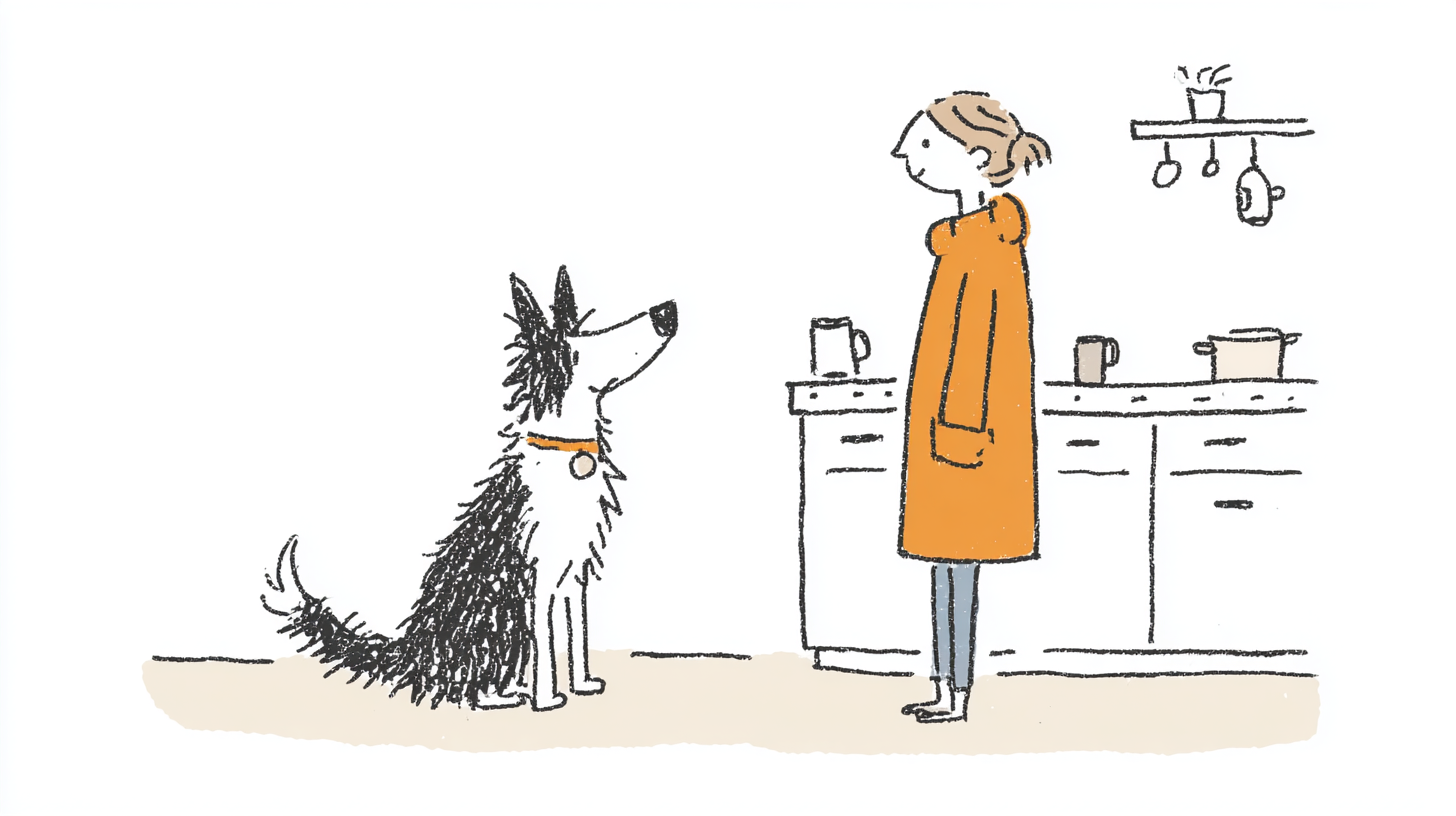Dog FOMO: When Your Pup Can't Handle Missing Out
Have you ever noticed your dog whining, pacing, or acting restless when they're left out of family activities? Your furry friend might be experiencing FOMO – Fear of Missing Out. While we often associate this term with humans scrolling through social media, our canine companions can experience their own version of this very real phenomenon.
Understanding canine anxiety is more important than you might think. Research shows that separation anxiety affects 14-20% of dogs (Tiira & Lohi, 2020), making it one of the most common behavioral issues veterinarians encounter. While FOMO is generally milder than clinical separation anxiety, recognizing and addressing it early can prevent it from escalating into more serious problems.
What Exactly is Dog FOMO?
FOMO in dogs manifests as mild anxiety or frustration when they're excluded from activities or left behind while others engage in something exciting. Unlike more severe behavioral issues, FOMO typically shows up as:
- •Restlessness or pacing when confined
- •Whining or barking to get your attention
- •Pawing at doors or crate walls
- •Mild destruction (like tearing up their bed)
- •Excessive focus on what's happening without them
The key characteristic? Once you're out of sight and earshot, most FOMO dogs will eventually settle down and relax.
FOMO vs. Separation Anxiety: Understanding the Difference
It's crucial to distinguish between FOMO and separation anxiety, as they require different approaches. With separation anxiety affecting up to 1 in 5 dogs, it's important to recognize whether your dog is experiencing mild FOMO or something more serious:
FOMO Characteristics:
- •Dog settles once you're gone
- •Initial protest that fades
- •Focused on missing specific activities
- •Generally calms within minutes
Separation Anxiety Characteristics:
- •Panic continues throughout absence
- •Destructive or self-harming behaviors
- •Inability to settle alone
- •Symptoms persist for hours
Think of FOMO as your dog saying, "Hey, you forgot me!" versus separation anxiety's "I can't survive without you!" The distinction matters because it affects how we help our furry friends cope.
Common Triggers for Canine FOMO
Understanding what sets off your dog's FOMO can help you manage it better:
Multi-Dog Households
When one dog gets attention, training, or playtime while others watch from the sidelines, FOMO can rear its head. Multi-dog training approaches can help address these dynamics. Dogs are social creatures who naturally want to be part of the pack's activities.
Family Activities
Dogs quickly learn routines and can anticipate when something fun is about to happen. Whether it's meal prep in the kitchen or getting ready for a walk, being excluded can trigger their fear of missing out.
Previous Experiences
Dogs who've enjoyed group activities like doggy daycare may develop FOMO when those experiences end. They remember the excitement and want to recreate it.
The Impact of FOMO on Your Dog's Wellbeing
While FOMO might seem less serious than other behavioral issues, it still affects your dog's quality of life:
- •Mental Overload: Dogs with FOMO struggle to focus on any one thing, constantly monitoring their environment for potential excitement
- •Reduced Enjoyment: They become so anxious about missing out that they can't enjoy their current activities
- •Stress Build-up: Chronic FOMO can lead to overall increased stress levels
Practical Strategies to Help Your FOMO Dog
The good news? FOMO is highly manageable with the right approach. Here's how to help your pup feel more comfortable:
1. Build a Strong Foundation with Station Training
Teaching your dog to relax in a designated spot is fundamental:
- •Start with short durations (30 seconds)
- •Gradually increase time
- •Reward calm behavior
- •Practice when there are no distractions
2. Create Positive Alone-Time Experiences
Make being separated feel rewarding:
- •Puzzle toys: Keep their mind engaged
- •Special treats: Save high-value chews for alone time
- •Comfortable space: Ensure their area feels safe and cozy
- •Background noise: Soft music or white noise can help
3. Consistency is Key
Address FOMO behaviors consistently:
- •Don't sometimes allow barking for attention
- •Maintain the same rules across all family members
- •Practice daily, even when it's inconvenient
- •Stay calm and matter-of-fact during separations
4. Exercise and Mental Stimulation
A tired dog is often a content dog:
- •Physical exercise: Appropriate daily walks or play sessions
- •Mental challenges: Training sessions, sniff games, or food puzzles
- •Social time: Controlled interactions with other dogs
- •Routine: Predictable schedules help reduce anxiety
5. Environmental Management
Set your dog up for success:
- •Visual barriers: Sometimes not seeing the action helps
- •Distance: Start training in a different room
- •Gradual exposure: Slowly work up to more challenging scenarios
- •Safe spaces: Create a den-like area where they feel secure
When to Seek Professional Help
While FOMO is manageable for most pet parents, consider professional help if:
- •Behaviors escalate despite consistent training
- •Your dog shows signs of separation anxiety
- •You're unsure about the distinction between FOMO and anxiety
- •The behavior impacts your daily life significantly
Building Long-Term Success
Remember, addressing FOMO isn't about making your dog less social or bonded with you. It's about teaching them that:
- •Being alone is safe and sometimes rewarding
- •They don't need to participate in every activity
- •Good things happen when they're calm and patient
- •Their needs will always be met
Final Thoughts
Dog FOMO might seem like a minor issue compared to severe behavioral problems, but it deserves attention and compassion. Every dog communicating discomfort – whether through mild whining or severe anxiety – is expressing a genuine need.
By understanding FOMO and implementing consistent, positive strategies, you're helping your dog develop confidence and independence. This not only makes your life easier but enriches your dog's emotional wellbeing, allowing them to enjoy both social time and peaceful solitude.
Remember, progress takes time. Celebrate small victories, stay consistent with your approach, and don't hesitate to seek support when needed. Your furry friend's journey to overcoming FOMO is just that – a journey. With patience, understanding, and the right tools like Separation Buddy, you can help them learn that missing out sometimes is perfectly okay.
References
Tiira, K., & Lohi, H. (2020). Prevalence, comorbidity, and behavioral variation in canine anxiety. Scientific Reports, 10, 2962. https://doi.org/10.1038/s41598-020-59837-z

